Authenticating with ADFS via OpenID Connect
ADFS Configuration
Add Application Group
- In AD FS Management right click Application Groups then select Add Application Group.
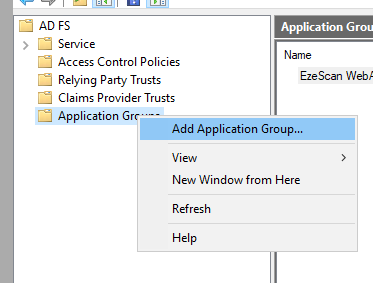
Enter the following details and then click the Next button:
Option Value Name EzeScan WebApps Template Web browser accessing a web application 
Enter the following details and then click the Next button:
Option Value Name EzeScan WebApps - Native application Redirect URI https://server.domain.com/signin-oidc
This should be the URL you use to access EWA with a "/signin-oidc" on the end.
Note: Be sure to click the "Add" button!
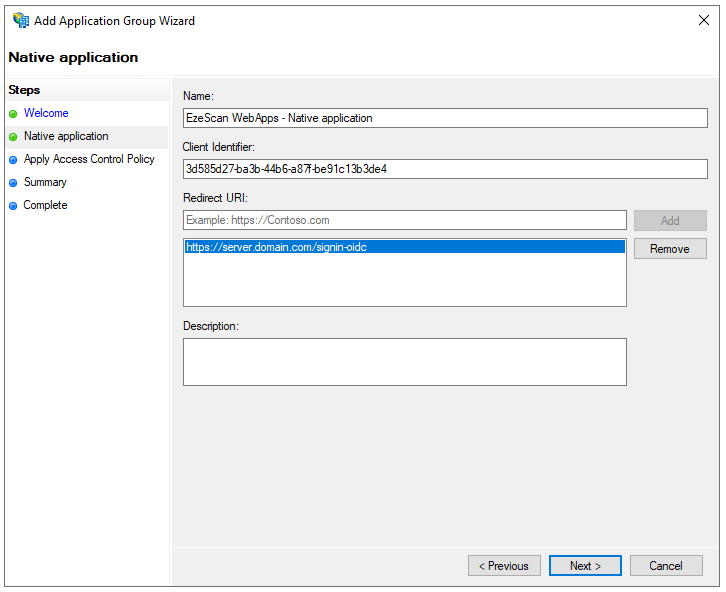
- Select your relevant access control policy and then click the Next button.

- Review the information and then click the Next button.
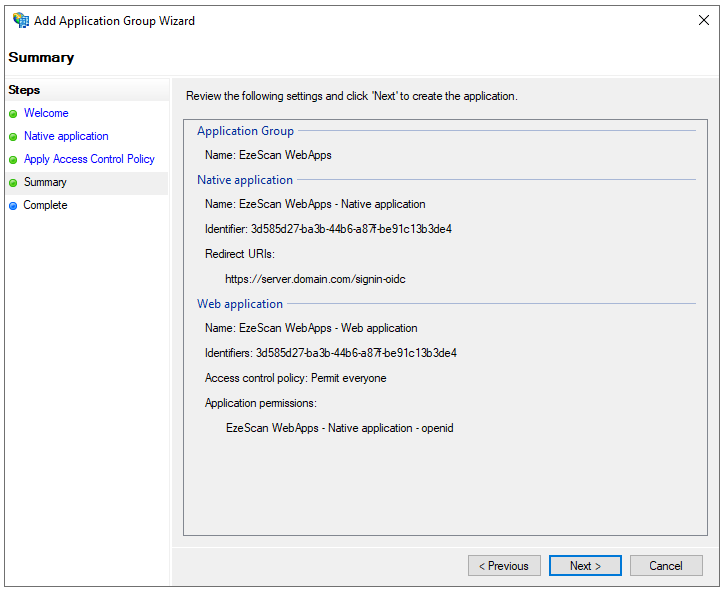
- Click the Close button.

Map Claims
- Right click the created Application Group and select Properties.

- Select the Web Application and click the Edit button.

- Select the Issuance Transform Rules tab and then click the Add Rule... button.

- Leave the default Send LDAP Attributes as Claims option and click the Next button.
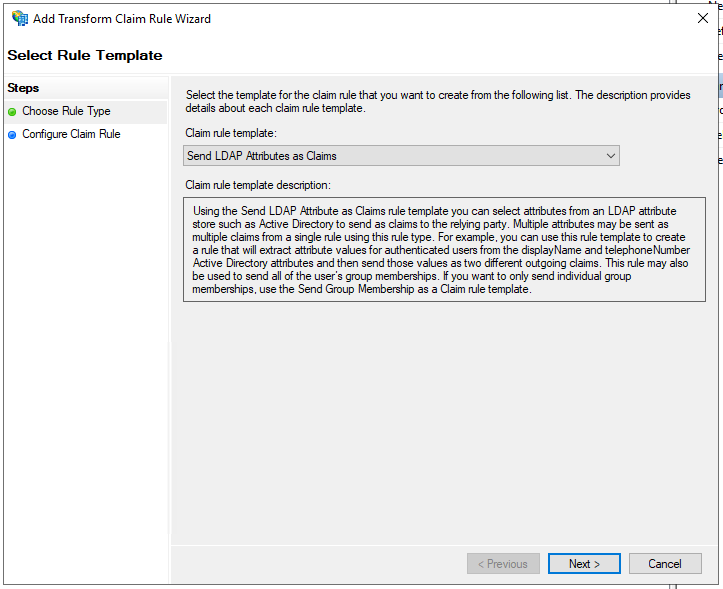
Enter the following details and then click the Finish button:
Option Value Name User Info Attribute Store Active Directory Mapping of LDAP attributes to outgoing claim types LDAP Attribute (Select or type to add more) Outgoing Claim Type (Select or type to add more) E-Mail-Addresses Email Address User-Principal-Name UPN Display Name Name Given-Name Given Name Surname Surname Token-Groups as SIDs Role 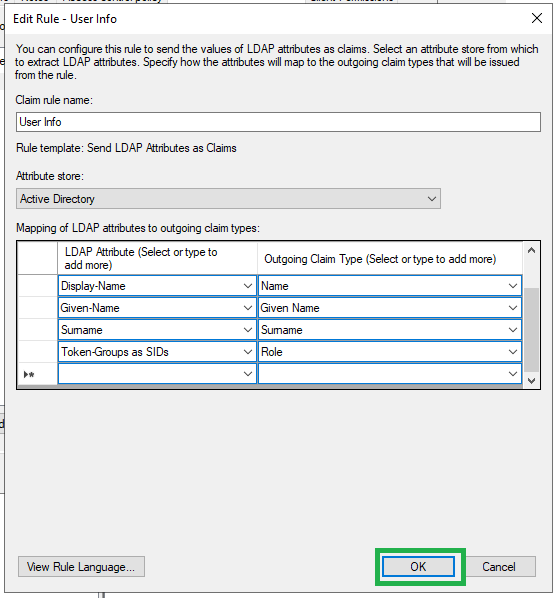
Locating the Client Id
- Right click the created Application Group and select Properties.

- Select the Native Application and click the Edit button.
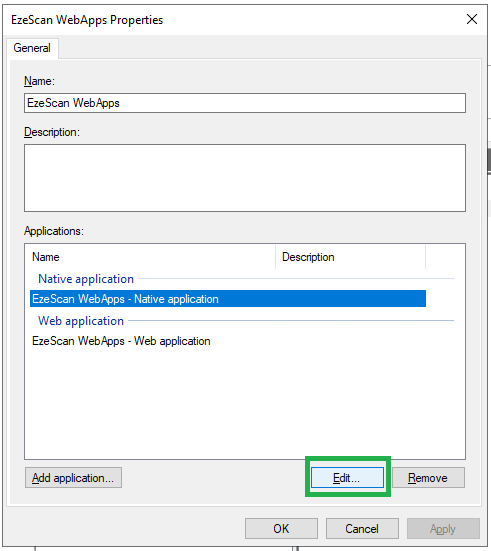
- Note down the Client Id

EzeScan WebApps Configuration
- Locate the appsettings.json file found in the root directory of your EzeScan WebApps installation directory.
Edit the appsettings.json file using your favorite text editor and modify the Authentication section to contain the following:
appsettings.json
JS"Authentication":{ "EnableApiKey":true, "Providers":{ "OpenIdConnect": { "Authority": "https://adfs-server.domain.com/adfs", "ClientId": "3d585d27-ba3b-44b6-a87f-be91c13b3de4", "MetadataAddress": "https://adfs-server.domain.com/adfs/.well-known/openid-configuration", } } }You will need to substitute "adfs-server.domain.com" with your ADFS servers fully qualified domain name (FQDN).
Be sure to substitute the value of "ClientId" with the "Client Id" set in ADFS. If you're unsure then see Locating the Client Id
- Save the appsettings.json file.
- Restart the IIS App Pool that runs EzeScan WebApps.
- Navigate to your EzeScan WebApps site and click the Login button.

- Try logging in as a valid ADFS user.

- After successfully logging in you will be redirected back to EzeScan WebApps and in the top right hand corner you should see your display name.

